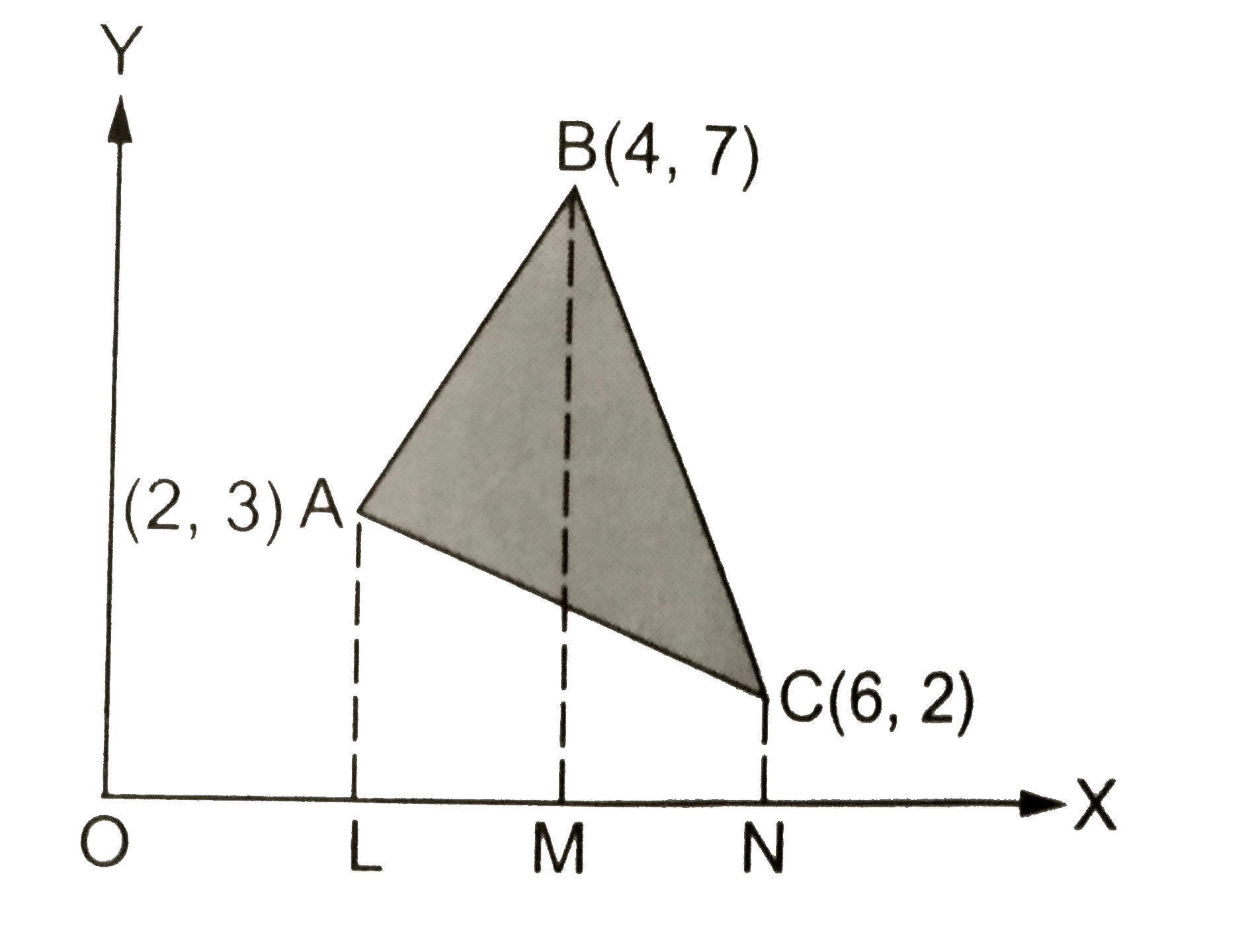Using integration, find the area of ΔABC, whose vertices are A(2,3),B(4,7) and (6,2).
Video Solution
Text Solution
The equation of AB is
y−3x−2=7−34−2⇒y=2x−1
The equation of BC is y−7x−2=2−36−2⇒y=−14x+72
Draw AL⊥Ox,BM⊥OXandCN⊥OX
Area of Δ ABC=(area ALMBA+ are BMNCB)-(area ALNCA)
=4∫2yABdx+6∫4yaBCdx−6∫2yACdx
=4∫2(2x−1)dx+6∫4(−52x+17)dx−6−14x+722dx
=[x2x]42+[−54x2+17x]64−[−18x2+72x]62
=[(12−2)+(57−48)−(332−132)]sq units
= 9 sq units
Hence the required area is 9 sq units .

|
Topper's Solved these Questions
- AREA OF BOUNDED REGIONS BOOK - RS AGGARWALCHAPTER - AREA OF BOUNDED REGIONS EXERCISE - Exercise 17
39 Videos
- APPLICATIONS OF DERIVATIVESBOOK - RS AGGARWALCHAPTER - APPLICATIONS OF DERIVATIVESEXERCISE - Objective Questions
89 Videos
- BAYES'S THEOREM AND ITS APPLICATIONSBOOK - RS AGGARWALCHAPTER - BAYES'S THEOREM AND ITS APPLICATIONSEXERCISE - Exercise 30
18 Videos
Similar Questions
Knowledge Check
The area of ΔABC whose vertices are A (2,5), B (4,7) and C(6,2) is
A7 sq. unitsB14 sq. unitsC21 sq. unitsD28 sq. unitsFind the area of the triangle, whose vertices are (2,1), (4,5) and (6,3).
A3B6C9D12
Using integration, find the area of the triangle whose vertices are (1, 0), (4, 0) and (4, 4).
View SolutionFind the centroid of ΔABC whose vertices are A(2,−3),B(4,2) and C(−3,−2) .
View SolutionUsing integration, find the area of the triangle whose vertices are (−1,0)(1,3) and (3, 2).
View SolutionFind the area of AABC, whose vertices are A(8, -4), B(3, 6) and C(-2, 4).
View SolutionFind the equation of the sides of ΔABC whose vertices are A(2,−3), B(0,1) and C(4,2).
View SolutionUsing the method of integration, find the area of the triangular region whose vertices are (2,−2),(4,3)and(1,2).
View Solution
